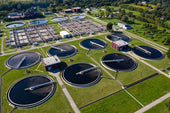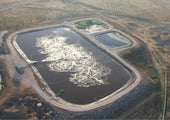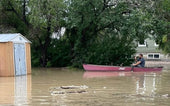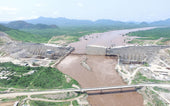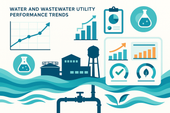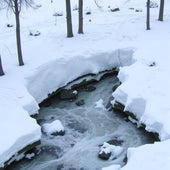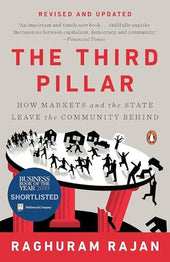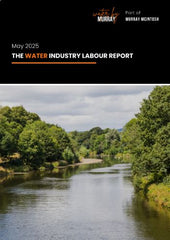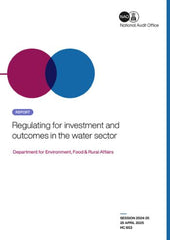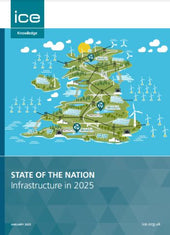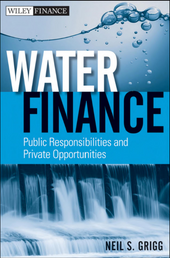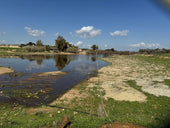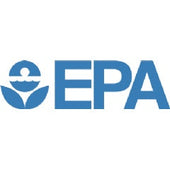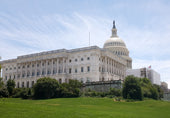
The Hidden Cost of Political Deadlock
How the 2025 Government Shutdown Is Inflicting Lasting Environmental Damage
November 2025
When the federal government shut down on October 1, 2025, the immediate headlines focused on furloughed workers and disrupted services. But as the shutdown approaches its second month with no resolution in sight, a more insidious crisis is unfolding: irreversible damage to America's environmental protections, natural resources, and climate resilience infrastructure.
A Crisis Years in the Making
The shutdown resulted in approximately 900,000 federal employees being furloughed and another 2 million working without pay, but the environmental consequences extend far beyond staffing disruptions. This isn't just a pause button on environmental protection—it's actively setting back decades of progress in ways that cannot simply be reversed when funding resumes.
The EPA in Freefall
About 89% of the Environmental Protection Agency's 15,000 workers have been furloughed, leaving only security guards, criminal investigators, and emergency response workers on duty. The agency has stopped conducting non-criminal pollution inspections, issuing new grants, updating its website, issuing permits, and conducting most scientific research.
The timing couldn't be worse. The EPA was already reeling from massive staff cuts, with former officials estimating a 25% reduction in workforce before the shutdown even began. This double blow has essentially gutted the agency's capacity to fulfill its foundational mission of protecting public health and the environment.
When Environmental Oversight Disappears, Polluters Take Notice
History provides a sobering preview of what happens when environmental enforcement goes dark. A scientific study of pollution from about 200 coal-fired power plants during the 2018-2019 government shutdown found they significantly increased their particulate matter emissions due to the EPA's furlough—pollution linked to thousands of premature deaths annually in the United States.
During the 2013 shutdown, the EPA halted inspections for 1,200 sites including hazardous waste facilities, drinking water systems, and chemical plants. The gap in oversight creates a dangerous window of opportunity for non-compliance that puts vulnerable communities at greatest risk.
National Parks: Monuments to Political Dysfunction
Our national parks are bearing visible scars from this shutdown. Because of earlier DOGE cuts, 24% of National Park staff were already fired this year, doubling down on strained ability to protect parks from vandalism and infrastructure collapse.
The 2019 shutdown, which lasted 35 days, offers a cautionary tale. Parks left open but unprotected suffered vandalized archaeological sites, illegal off-roading that destroyed sensitive ecosystems, piles of garbage polluting the environment, and overflowing sewage from unmaintained infrastructure—much of this damage was permanent.
During that shutdown, the National Park Service estimated more than $500 million in lost visitor spending nationwide, not counting the incalculable cost of irreplaceable natural and cultural resources destroyed by neglect.
A Strategic Attack on Environmental Protection
Perhaps most troubling is how this shutdown is being weaponized. The White House Budget Office is prioritizing permits and leases for oil and gas drilling as 'essential' during the shutdown, while park rangers and environmental scientists are deemed non-essential.
The administration has approved more than 300 new oil and gas drilling permits during the shutdown, along with destructive projects in Alaska including right-of-way permits for mining access and road construction through Izembek National Wildlife Refuge that would destroy critical migratory bird habitat.
Meanwhile, the Centers for Disease Control and Prevention furloughed everyone in the National Asthma Control Program and all civil servants in the Climate and Health Program, suspending programs that help states respond to air pollution emergencies like wildfire smoke.
The Long Tail of Environmental Damage
Federal government services can't be turned off and on like a light switch—restarting requires bringing staff back, reinitiating operations, reimagining programs, and overcoming significant lag time before services reach the public again.
The disruption cascades through interconnected systems:
Research and Data Collection: All EPA-funded research and grant making are paused, programs under the Toxic Substances Control Act face delays, and data collection for environmental and climate research is interrupted, undermining the continuity required for sound science
Superfund Sites: Work on Superfund cleanup sites stops except where public health would be at immediate risk, leaving communities near hazardous waste sites more vulnerable
Climate Science: Researchers at NOAA-affiliated institutions cannot access federal supercomputers or lab space, disrupting wildfire and drought research with implications for American leadership in global science
Environmental Justice Communities Bear the Greatest Burden
The communities hit hardest are those already facing environmental justice challenges and those which depend most on consistent federal enforcement and support—weakened oversight often leaves rural and low-income communities most vulnerable.
These communities lack the resources to protect themselves when federal enforcement disappears. Past shutdowns have seen spikes in emissions as polluters exploit enforcement gaps, with communities near hazardous waste sites facing the greatest risks.
The Path Forward
This shutdown represents more than a temporary inconvenience. Every pause in enforcement, every stalled cleanup, every missed dataset means lost ground that cannot always be regained—restarting after a shutdown does not return us to the same place, it leaves us behind.
As we watch this crisis unfold in real time, several urgent actions are needed:
For Policymakers:
Immediately pass funding legislation that fully supports environmental agencies
Protect essential environmental services from being used as political bargaining chips
Ensure environmental justice communities receive priority protection during future disruptions
For Communities:
Document environmental violations and changes during the shutdown
Demand accountability from polluters who exploit enforcement gaps
Support local organizations working to fill federal protection gaps
For Organizations Like escore:
Amplify the voices of affected communities
Track and report environmental impacts that might otherwise go unnoticed
Build resilience strategies that don't depend solely on federal oversight
A Reckoning Long Overdue
The 2025 shutdown has exposed a fundamental vulnerability in our environmental protection system: when politics trump public health, nature and vulnerable communities pay the price. The damage being inflicted today—to ecosystems, to scientific knowledge, to public trust—will echo for years and decades to come.
We cannot afford to treat environmental protection as optional or partisan. The air, water, and land that sustain us don't care about political deadlock. They only respond to action—or in this case, to its absence.
The question now is whether we will learn this lesson before the damage becomes truly irreversible.
.










